Collections Spotlight: Jane Hyslop
By Paige
Industrialisation often coincides with environmental change and potential devastation. As the coal mining industry gained prominence in the nineteenth century during the Industrial Revolution, a rise of collieries led to a change to the land they were built on. Jane Hyslop represents this idea in a 1990 series which shows the creation, development, and eventual decline of the Gilmerton Colliery. Hyslop, an Art and Illustration lecturer at the Edinburgh College of Art, creates drawings and prints. She combines her interest of the mining industry in Midlothian with the cultivation of plants and impact on the land of these sites [1]. Hyslop creates a narrative of the impact on human intervention on the land through social, architectural, and natural history [2]. The ten-picture series highlights these themes as each engraving depicts the changing land in Gilmerton from a view of the sky, ground, and below-ground. In the series, she traces the evolution of the colliery from before its creation to its eventual demise with each engraving showing a shift in the scenery.

The first engraving depicts the land before industrialisation or human intervention. Hyslop fills the sky with birds, the ground with a row of trees, and the underground with coal. The second engraving represents the first change in scenery. The row of trees has been disrupted by a building, likely a house. The removed trees have been chopped down and turned into logs. And the house has smoke coming out of the chimney.

The removal of trees continues in the third engraving as only three remain. Hyslop adds more houses and buildings which are warmed by the wood from the cut-down trees. By the fourth engraving, the trees, and consequently the town’s source of fuel, are gone.

With the loss of an energy resource, the growing town needed a new fuel for their homes. As a result, they began digging below ground. This is evident in the fifth engraving as a tunnel appears underground and a bing (pile of waste rock) sits above ground. While previously the smoke from the chimneys was light grey, the smoke is now much darker from the coal. The sixth engraving continues the development of the coal mine as a colliery appears. The tunnel underground deepens, and the bing grows.

The seventh engraving represents the colliery at the peak of its production. The bing reaches its highest point, and coal usage within the town is widespread. Beginning in the eighth engraving, a major decline occurs as the colliery leaves, the town’s coal usage lessens, and the bing while still large, thins a bit. This trend continues into the ninth painting where the bing is significantly less.

The final engraving shows the end of coal usage in the town. While buildings remain, the colliery and bing are completely gone. And several buildings have disappeared and been replaced with five small trees.
The environmental effect of coal mining is well known and documented, especially in 2024. Hyslop, in 1990, managed to encompass this devastation. Her website explains that she “combines natural and human histories by investigating points of tension where these different worlds meet” [3]. By creating a narrative through the engravings, Hyslop contributes to a scholarly approach to the Anthropocene. As explained by Nicholas Mirzoeff, the Anthropocene is the “name given by scientists to the new era in geology caused by human intervention, primarily the burning of fossil fuels” [4]. Mirzeoff discusses the aesthetic of art that depicts human interaction on the environment. Claude Monet’s Unloading Coal, for example, depicts a group of workers taking coal off barges. Yet, as explained by Mirzoeff, the individuals in the painting do not matter. Instead, Monet focuses on the coal and its influence as a “visible sign of human dominance over nature” [5]. Similarly, Hyslop shows human intervention in Gilmerton, yet she does not depict a single person in her engravings. The influence of humans is implied through their dominance of the land. Humans cut down trees, pollute the sky, and mine the coal. While the last engraving shows the regrowth of trees, the effects of industrialisation remain and cannot be undone. Hyslop artistically depicts this scholarly interpretation of the Anthropocene.
[1] https://www.eca.ed.ac.uk/profile/jane-hyslop
[2] Ibid.
[3] https://www.janehyslop.com/about/
[4] Nicholas Mirzoeff, “Visualizing the Anthropocene,” Public Culture 26, no. 2 (2014): 213.
[5] Mirzoeff, “Visualizing the Anthropocene,” 222.

 Blog
Blog




